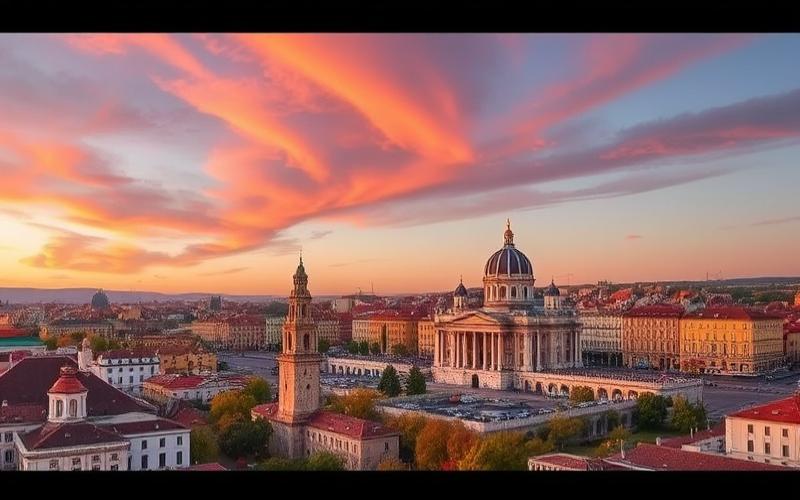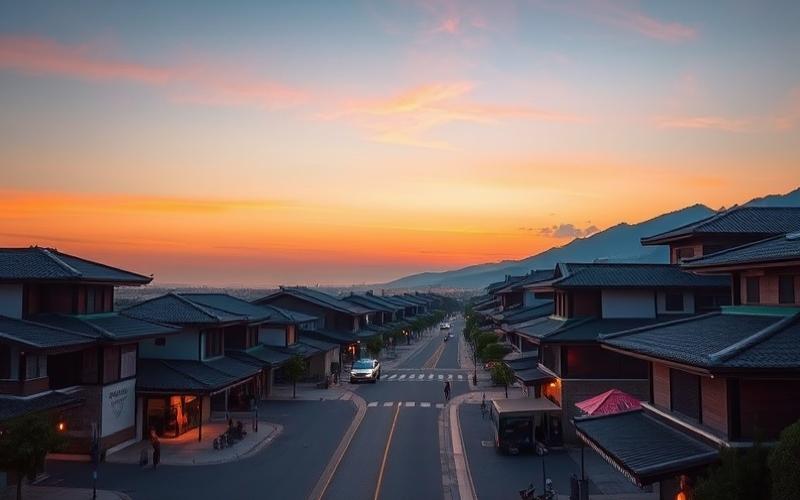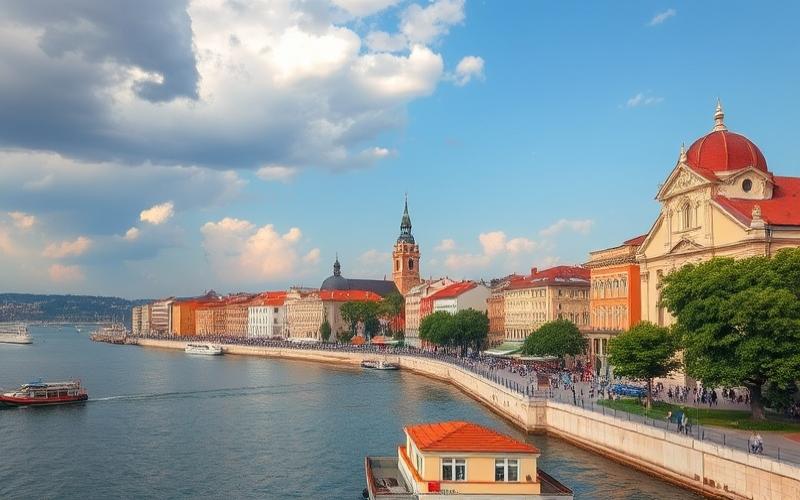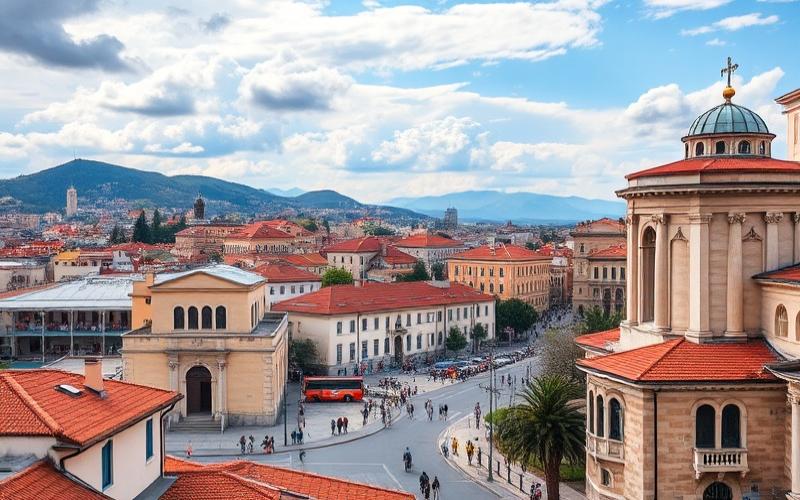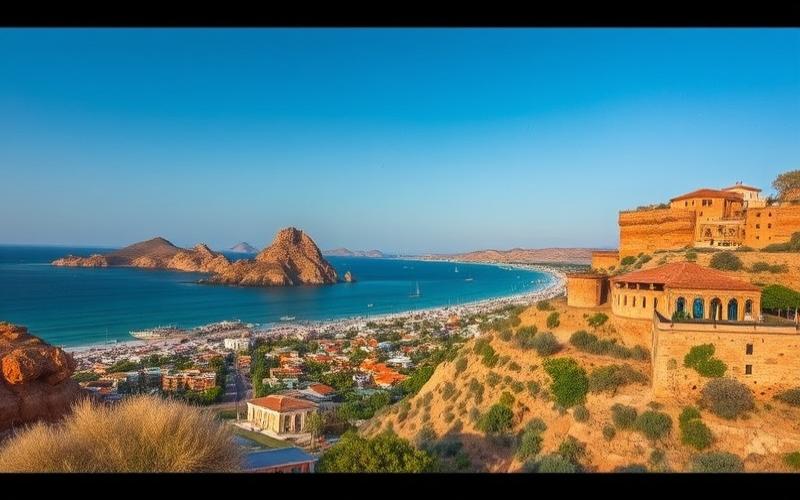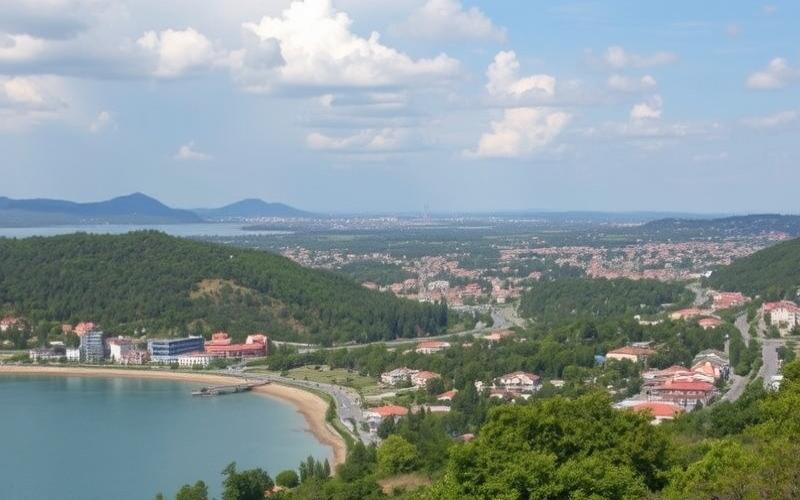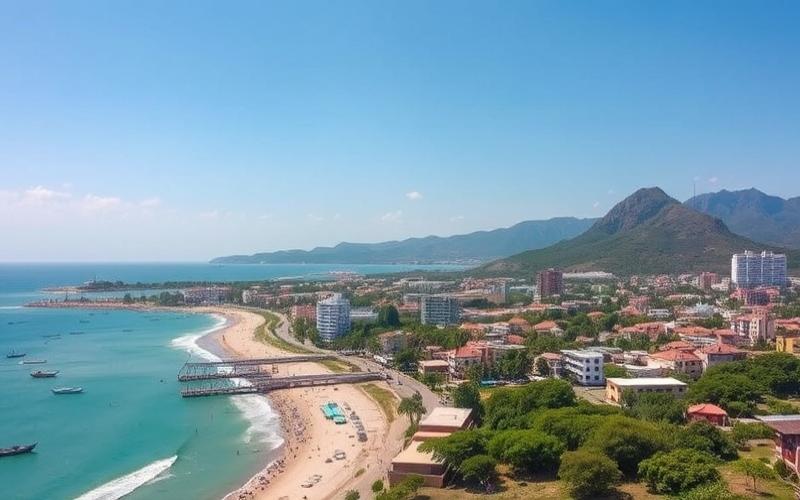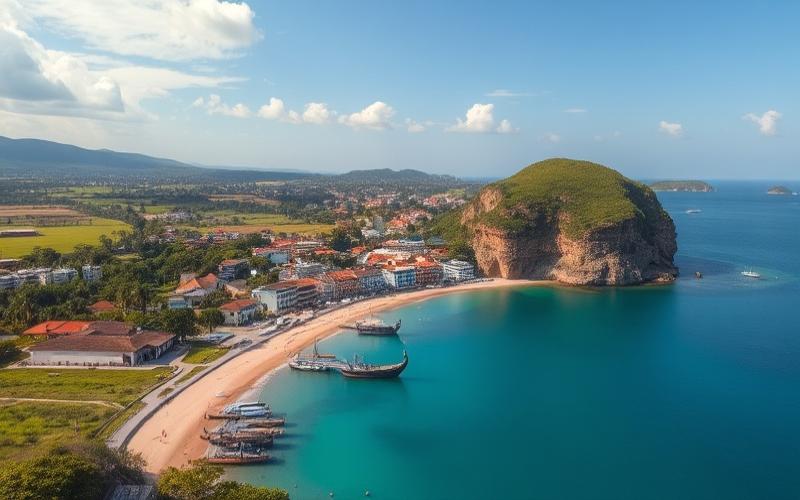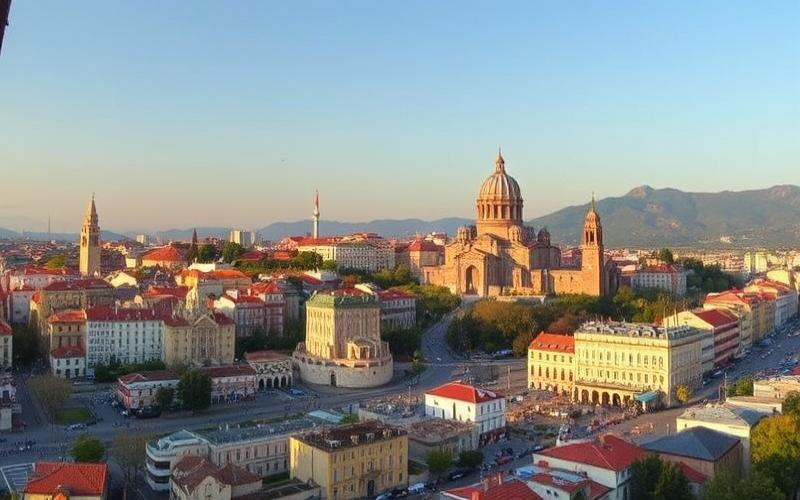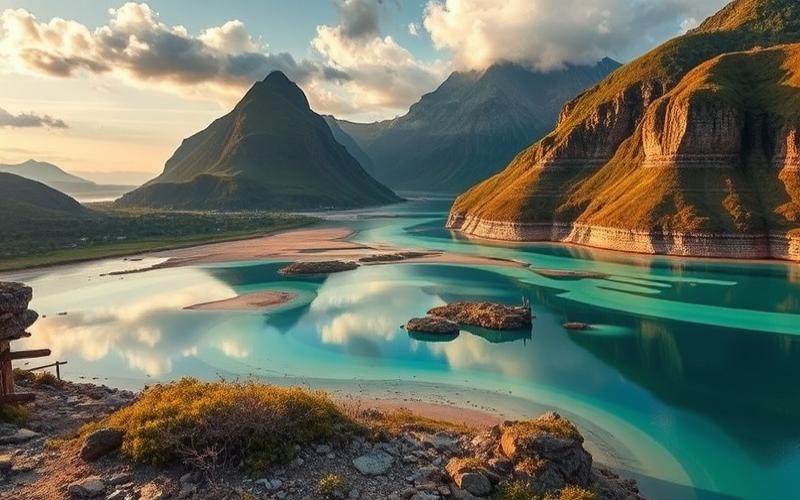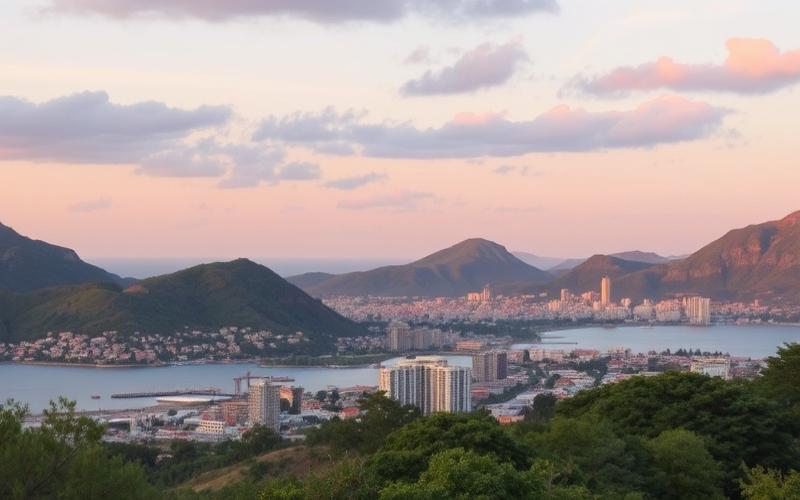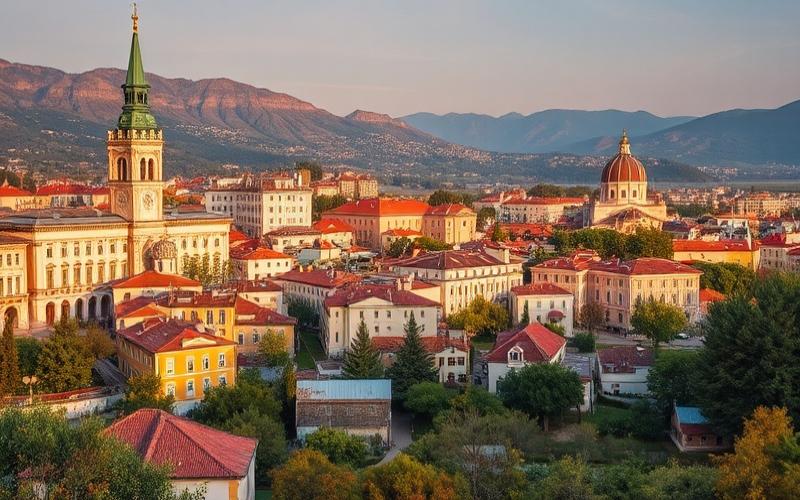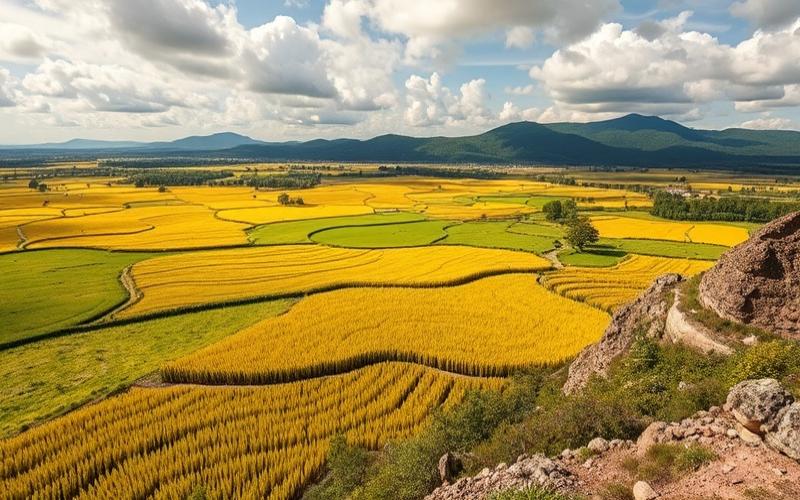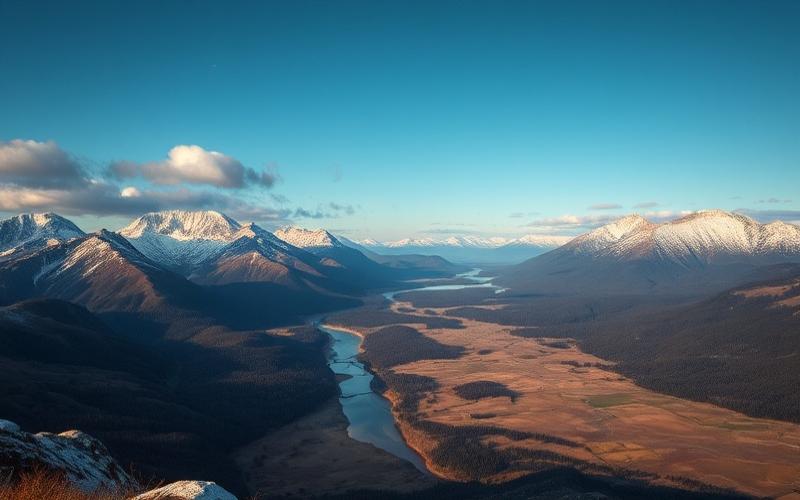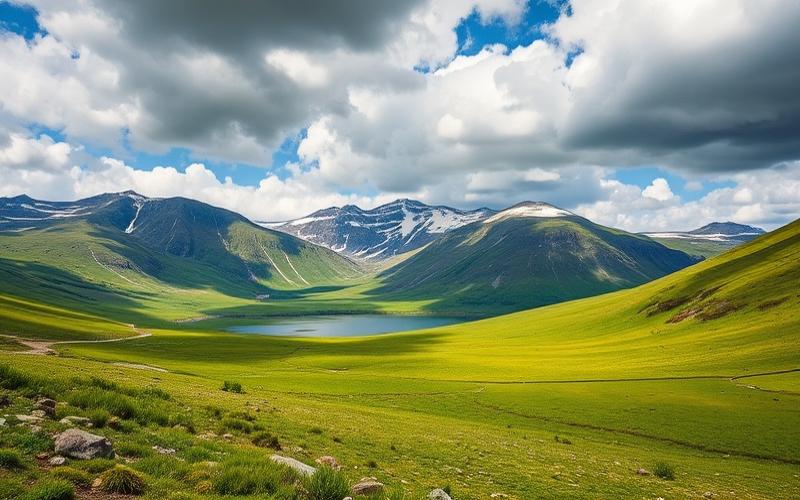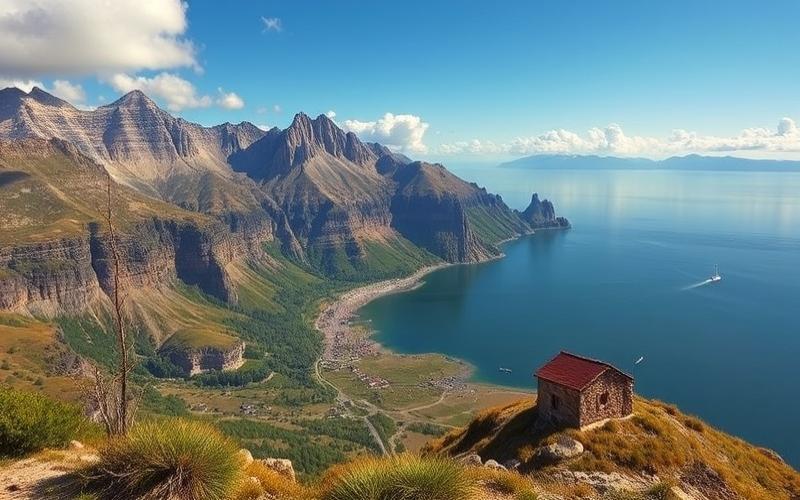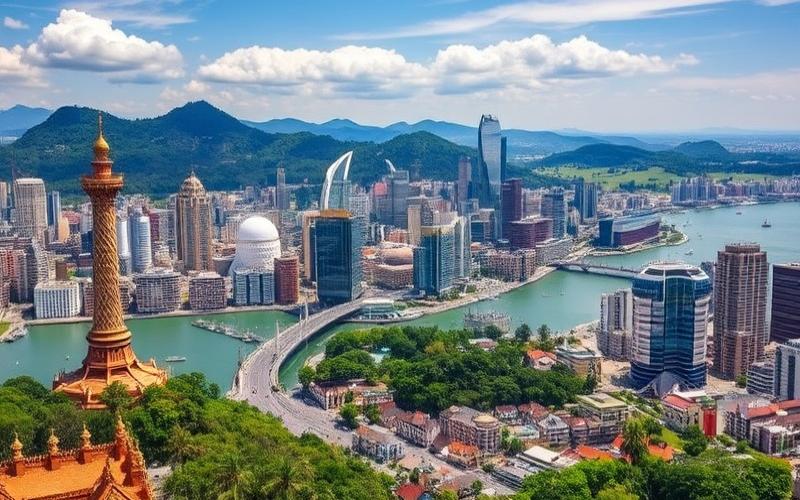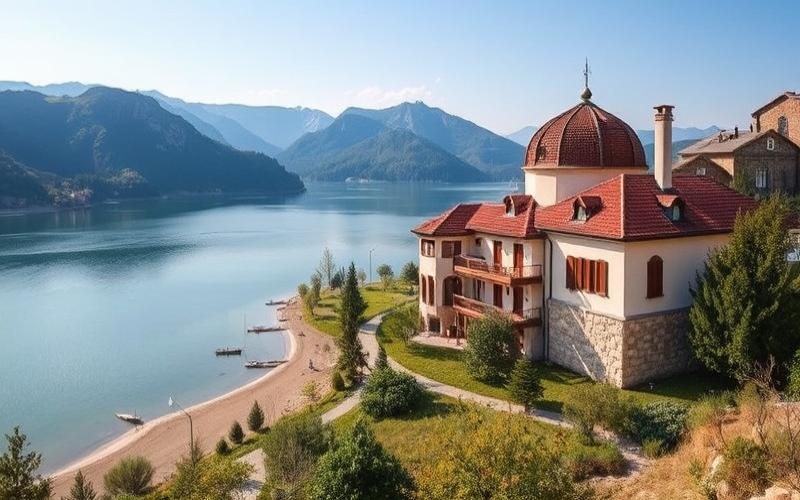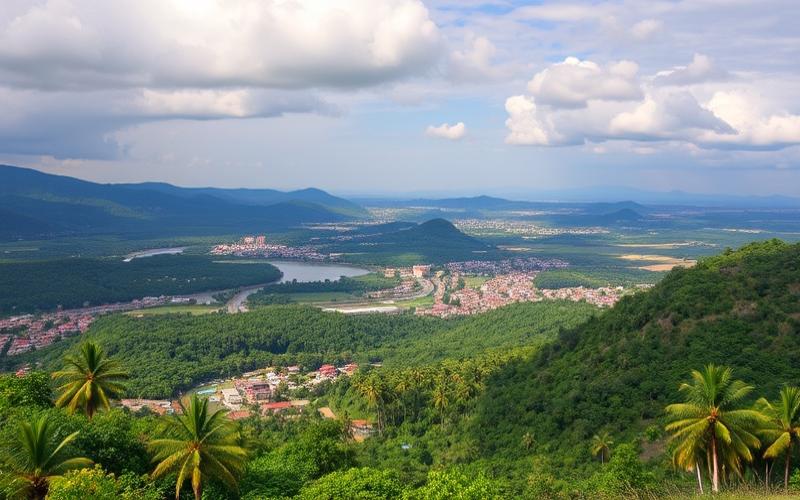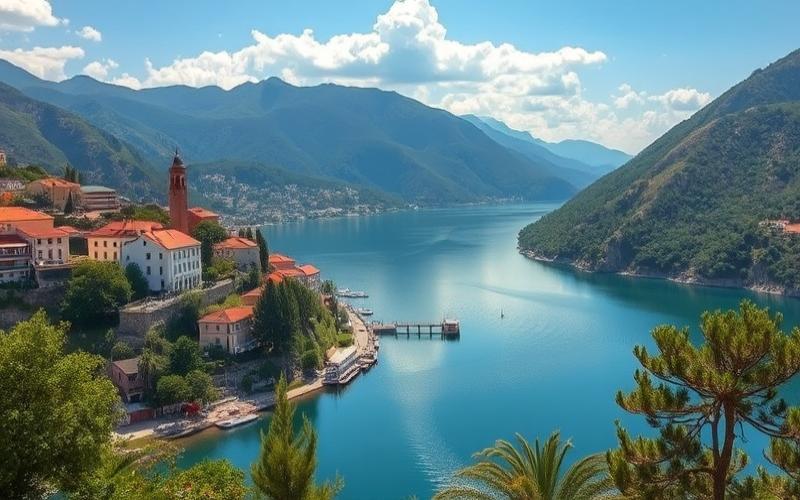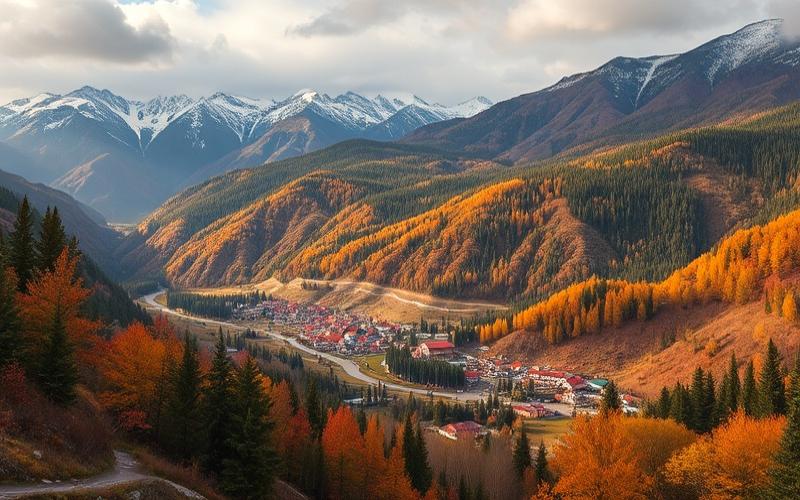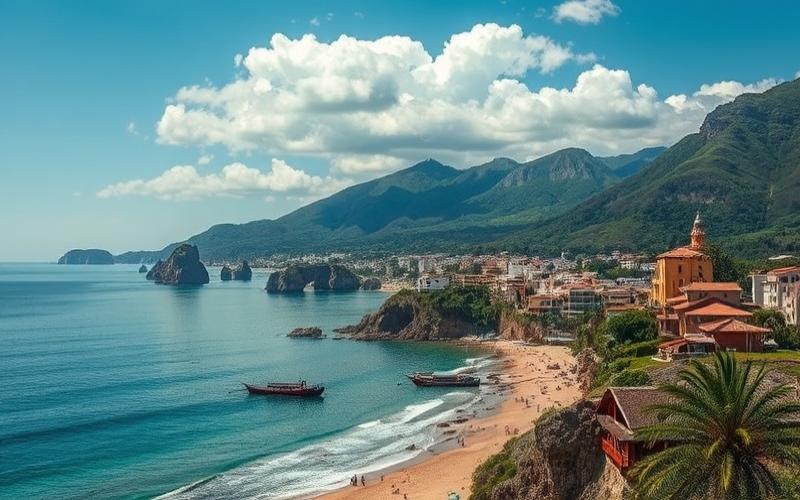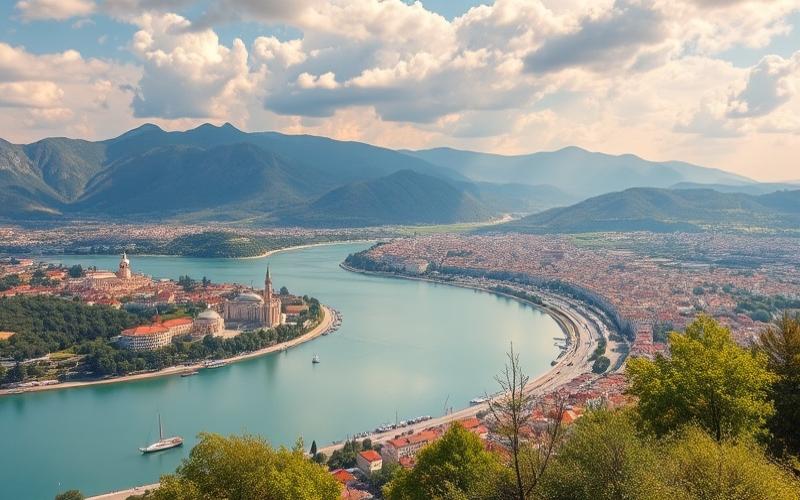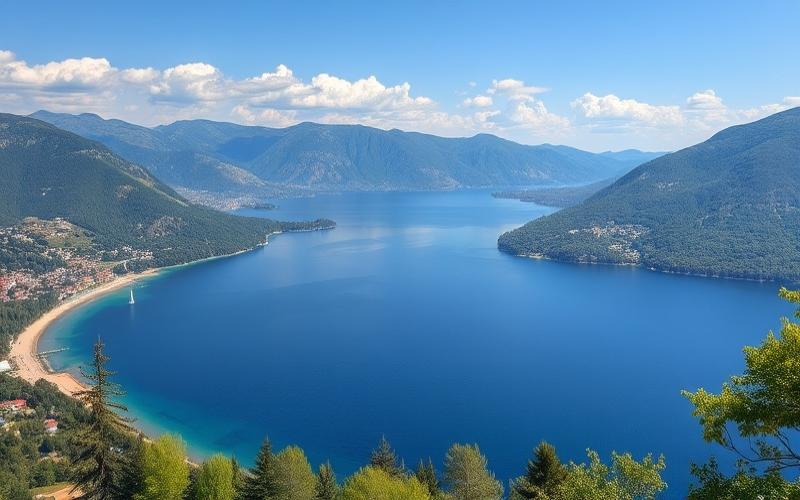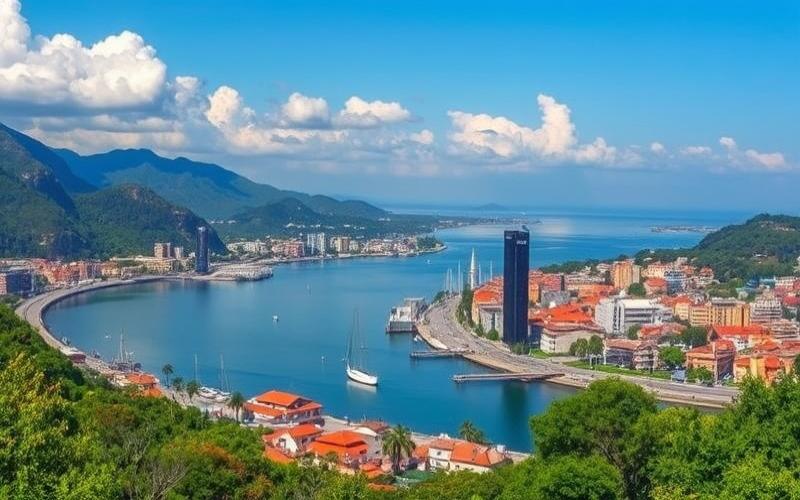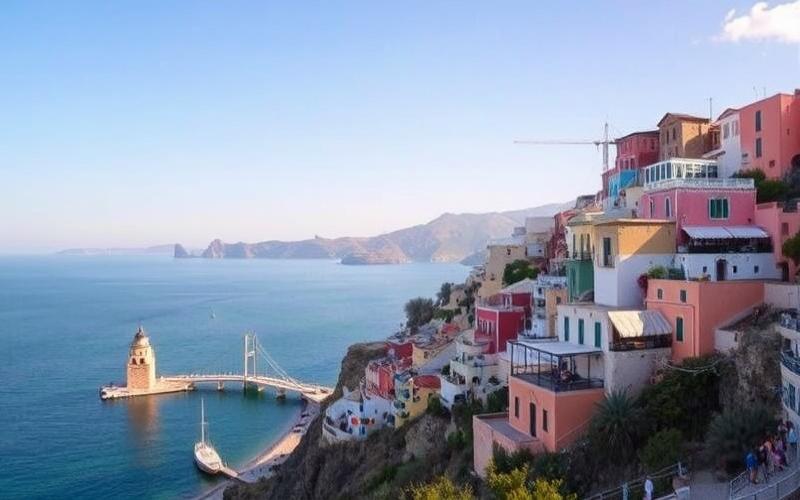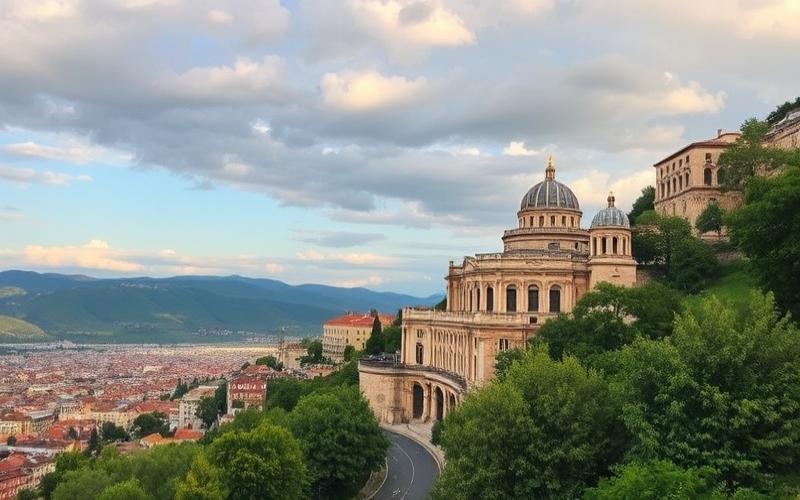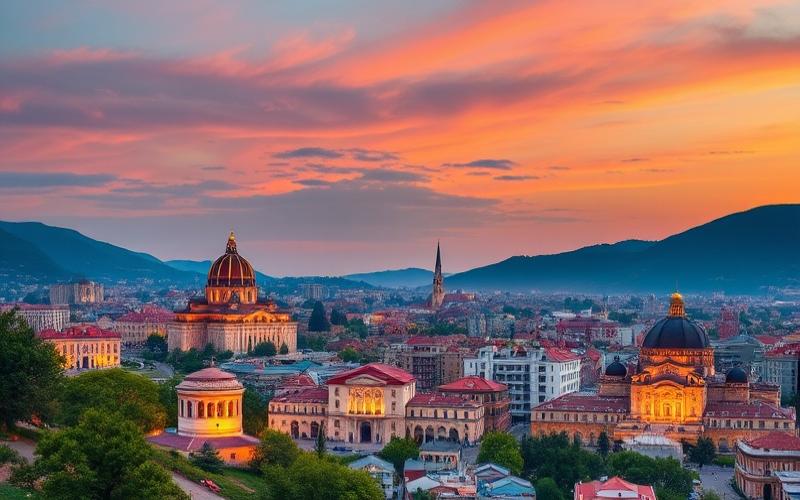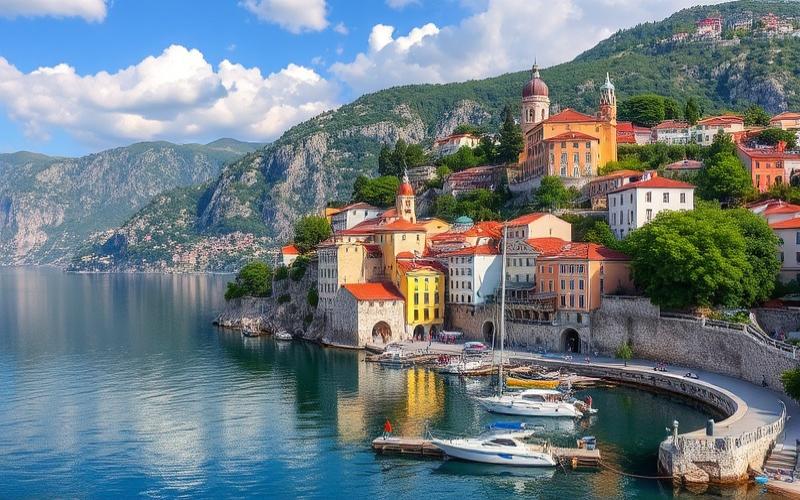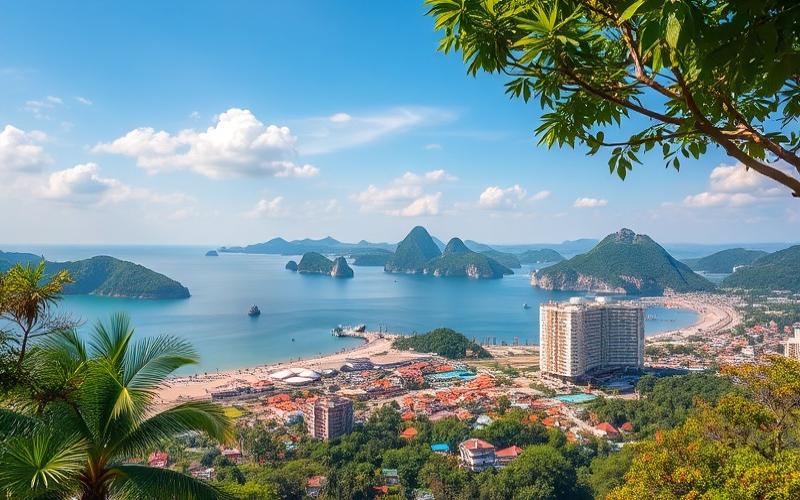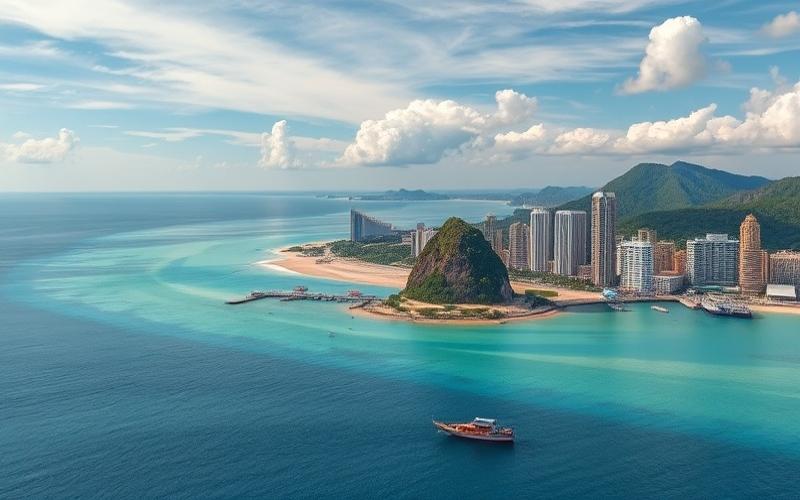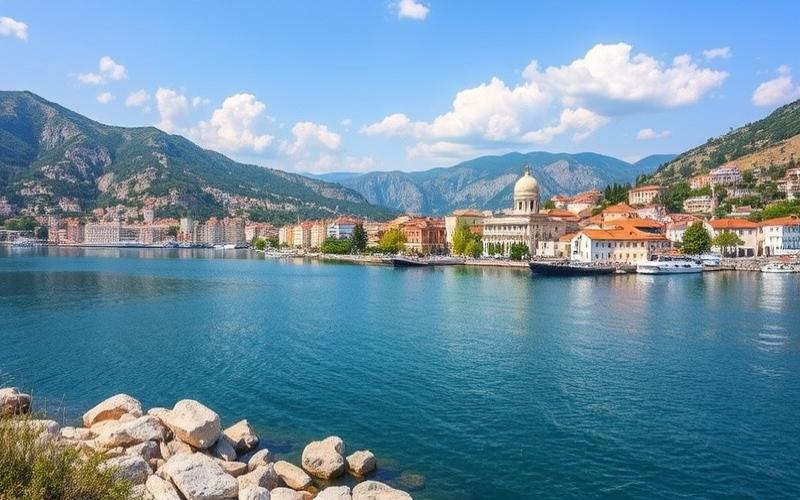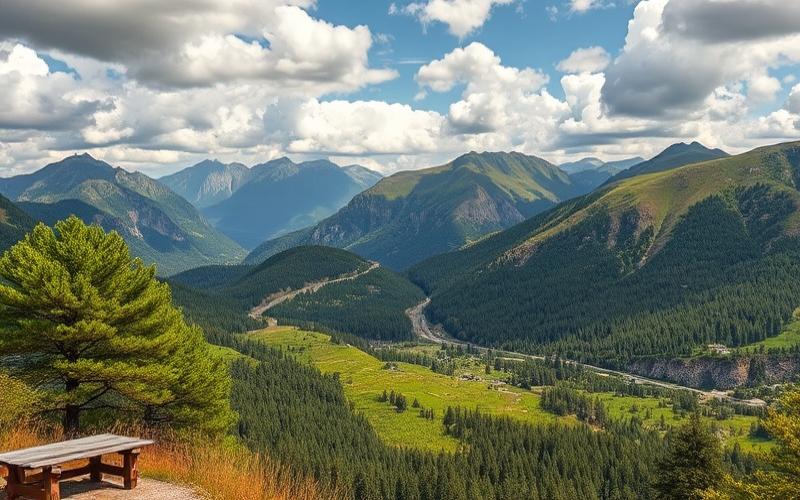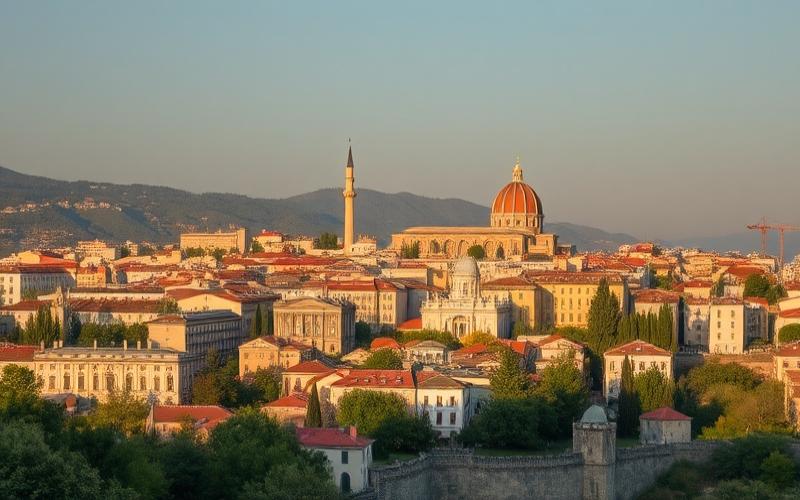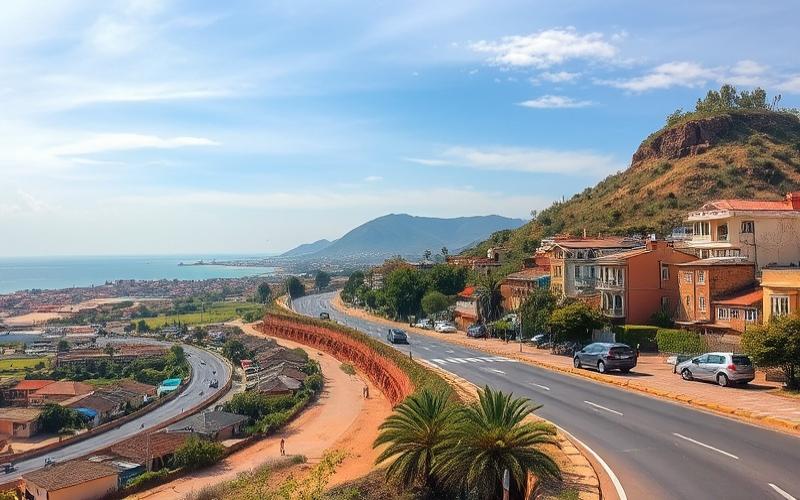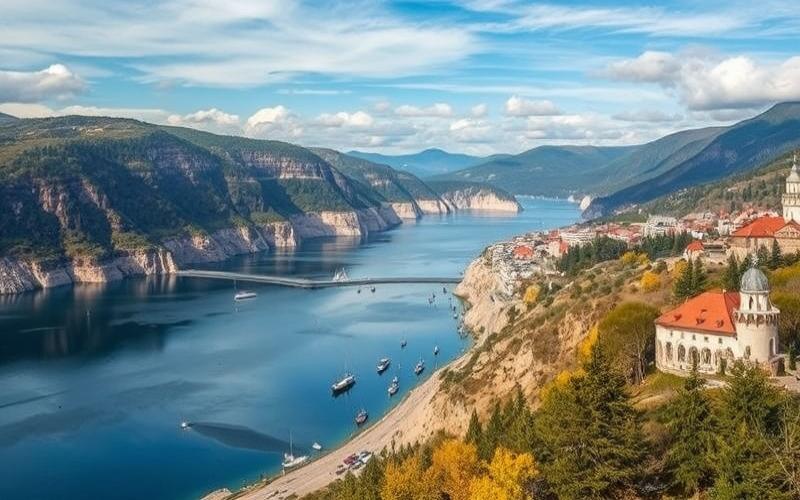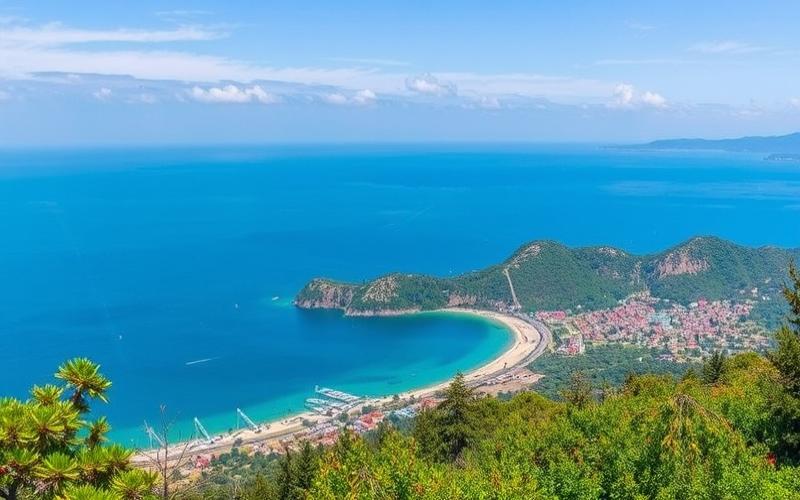
 Published on and written by Cyril Jarnias
Published on and written by Cyril Jarnias
The real estate market in North Macedonia is currently undergoing a dynamic transformation period, marked by trends that are redefining investor and buyer expectations. While major cities like Skopje continue to attract attention with increasing residential and commercial projects, there’s also growing interest in rural regions, fueled by sustainable development policies and green initiatives.
This paradigm shift is accentuated by the rising demand for modern and technologically advanced housing, responding to the needs of an increasingly connected population. In this article, we’ll explore how these developments are shaping a rapidly changing market and what opportunities this represents for local and international players.
Booming Sectors in Macedonian Real Estate
North Macedonia is experiencing remarkable dynamism in the real estate sector, driven by several major trends and growing demand from both local and international markets.
Recent Trends
- Apartment prices increased by 20.5% at the end of 2022 compared to the previous year, continuing their upward trend with +7% in the last quarter of 2023.
- This rise primarily affects major cities but is also extending to authentic rural regions.
- The market is attracting local and foreign investors, drawn by the ease of investment (10th worldwide for ease of doing business according to the World Bank).
High-Growth Areas
| City/Region | Specificity | Project Types/Sought Properties | Average Price per m² (€) |
|---|---|---|---|
| Skopje (center/Aerodrom/Diamant) | Capital, sought-after neighborhoods | New residences, modern commercial spaces | 1,200 – 2,000+ |
| Ohrid & lakeside villages | UNESCO site/lake | Renovated houses for green tourism/residential | 700 – 1,200 |
| Bitola (countryside) | Proximity to Greece/Albania | Traditional farms | 500 – 900 |
| Tikveš (wine region) | Agricultural/wine hub | Agricultural land | 300 – 600 |
New Projects and Promising Segments
- Multiplication of modern residential complexes in Skopje and major cities
- Development of commercial spaces, particularly offices adapted to new urban uses
- Strong demand for tourist real estate, with renovation or construction of dedicated housing around Lake Ohrid and in picturesque rural areas
- Sustained growth in the rural segment linked to green tourism: acquisition of traditional houses or agricultural properties
Recent examples:
- The Diamant neighborhood in Skopje is seeing prices climb thanks to high-end projects.
- Villages around Ohrid have recorded accelerated foreign demand over the past two years.
Stimulating Government Policies
- Simplified processes for foreign real estate purchases through administrative reforms
- Occasional tax incentives for certain rural or tourist real estate investments
- Official support for proptech technological development aimed at modernizing the sector
Major Players Involved
The main developers are:
- National companies specializing in new residential properties,
- International investors attracted by the average gross rental yield around 3.34%
- Local “proptech” startups facilitating transactions and property management through innovative digital platforms.
“Investing here today allows you to acquire a traditional house less than an hour from downtown while enjoying exceptional nature. We’ve observed a clear acceleration in foreign demand over the past two years,” notes a local agent.
Main Types of Properties in Demand
- New or renovated apartments in the city
- Secure residential complexes
- Modern commercial spaces/flexible offices
- Traditional/rural houses for tourist or secondary use
This dynamic combined with national economic stability suggests continued sustained growth in the Macedonian real estate market in the coming years.
Good to Know:
In North Macedonia, the real estate sector is experiencing notable dynamism, particularly in cities like Skopje and Ohrid, where the development of modern residential complexes and tourist infrastructure is rapidly expanding. Property prices in Skopje have increased by 10% over the past year, driven by growing demand for urban apartments and commercial spaces. Major projects, such as the development of new technology hubs and shopping centers, are also energizing the Bitola region. The government supports this growth through tax policies favorable to foreign investments and initiatives aimed at improving urban infrastructure. Major players like Eastern Gate Developments play a key role in these projects, attracting increasing numbers of international investors interested in the promising returns of the Macedonian market.
Fascinating Evolution of Real Estate Prices in North Macedonia
The evolution of real estate prices in North Macedonia follows a dynamic marked by sustained growth over the past decade, with a clear acceleration since 2020. In 2025, the average price per square meter in cities reached €1,783, fluctuating between €1,072 and €2,500 depending on neighborhoods and periods.
| Year | Annual Increase Rate (%) | Average Price per m² in Skopje (€) |
| 2014-2016 | 3 | ~1,100 |
| 2016-2018 | 5 | ~1,200 |
| 2018-2020 | 6 | ~1,300 |
| 2020-2022 | 7 | ~1,500 |
| 2022-2024 | ≈8 | up to 1,800 |
“Apartment prices increased by 20.5% at the end of 2022 compared to the end of 2021, then by another 7% in the last observed quarter.”
Several factors explain this evolution:
- Growing demand in urban centers, mainly in Skopje, fueled by the arrival of foreign students and remote workers.
- Government incentives to attract both local and international investors (including tax exemptions in certain areas).
- Rapid urban development characterized by the multiplication of new residential projects.
- Recent concerns about potential oversupply that could impact the future stability of the market.
Compared to other Balkan regions: Prices remain lower than those observed in Croatia or Serbia, while being more dynamic than in Albania or Montenegro thanks particularly to an attractive tax environment for foreign investors.
The balance between increased supply (with many new apartments) and demand remains crucial to avoid a real estate bubble or a sharp market reversal. Expert Cyril Jarnias emphasizes that
“The stability of the real estate market is crucial in a context of concerns about oversupply.”
The impact of foreign investments is tangible:
- Tax incentives implemented in recent years have strengthened appeal among international buyers.
- This has contributed to supporting the continuous price increase despite some local fluctuations.
In the medium term, economic forecasts anticipate:
- A moderate but steady continuation of real estate value increases if the current pace is maintained,
- A possible adjustment if the high number of new constructions consistently exceeds the actual capacity of the local market,
- A potential positive impact linked to major urban projects or planned infrastructure (modernized public transport, mixed residential neighborhoods).
Visual Summary:
Synthetic list of key factors influencing the Macedonian market
- Strong local demand (internal mobility + young households)
- Massive arrival of foreign investors
- Incentive public policies
- Numerous new constructions (+ oversupply risk)
The maintenance of this boom will depend as much on national economic dynamism as on the balance between available new housing and actual needs.
Good to Know:
In recent years, North Macedonia’s real estate market has experienced notable price fluctuations, influenced by economic factors such as GDP growth and increased political stability following the Prespa Agreement. Compared to other Balkan regions, like Serbia or Albania, the country shows slightly more moderate real estate price growth, although increased interest from foreign investors, particularly in the capital Skopje, has contributed to a recent rise in values. Insufficient local supply facing growing demand, fueled by urbanization and key infrastructure projects such as Corridor VIII, continues to push prices upward. Medium-term economic forecasts suggest a dynamic market, supported by planned infrastructure improvements and tax incentives for foreign investors. According to industry experts, the completion of major initiatives like the cross-border railway transport project could further increase property values.
Investment Opportunities: Which Property Type to Choose?
Recent Real Estate Market Trends in North Macedonia
The real estate market in North Macedonia shows sustained price increases, particularly for residential properties. In June 2025, the average asking price for residential properties reached €1,867/m², representing a 5.6% increase over one year. This dynamic is more pronounced in certain urban areas like Skopje where the square meter trades around €1,500/m² on average, but with significant variations depending on the neighborhood.
| Property Type | Average Price per m² (June 2025) | Annual Evolution |
| Residential (region) | €1,867 | +5.6% |
| Residential (Skopje) | ~€1,500 | — |
Developing sectors include:
- The urban peripheries of Skopje and other major cities
- Tourist areas near lakes and mountains
- Certain industrial hubs benefiting from foreign investments
Investment Opportunities by Property Type
Residential
- Strong rental demand in student urban centers or economically dynamic areas.
- Estimated gross rental yield of approximately 6.47% per year, which remains attractive compared to the European average.
- Marked preferences among local buyers for new or recent apartments with modern amenities; international investors often target seasonal or long-term rentals in these same areas.
Commercial
- Increased development in business districts and strategic axes related to regional commerce.
- Interesting potential linked to the progressive rise of tourism and local economic development.
Industrial
- Notable opportunities around logistics and industrial zones near pan-European corridors.
- Growing demand linked to foreign direct investments, particularly in manufacturing.
Economic and Political Factors Influencing the Market
The following factors stimulate attractiveness:
- Relative political stability since the perspective of gradual integration into the European Union
- Incentive tax policy for certain types of real estate investments
- Increased digitalization facilitating administrative procedures even for non-residents
However, it remains important to consider:
“International real estate investment requires a selective approach favoring political stability, legal transparency… It is therefore important to systematically verify legal and tax aspects before any commitment.”
Buyer Preferences & Return on Investment
Local buyers: preference for well-located family apartments or single-family homes in nearby suburbs.
International investors: primary search for high rental yield (furnished short-term rental), tourist potential.
The potential ROI remains competitive:
| Destination | Annual Gross Rental Yield |
| North Macedonia | ~6.47% |
| Serbia | ~7% |
Possible Risks & Practical Advice
Identified risks:
- Possible volatility linked to regulatory/tax developments
- Variable quality among local real estate developers
- Lesser but present risk concerning regional political stability
Key advice to optimize your investment:
- Prioritize central or emerging locations already benefiting from solid infrastructure
- Meticulously verify all legal aspects related to land ownership
- Inform yourself about the tax regime applicable to non-residents
- Diversify between high-yield residential (downtown), strategic commercial (busy axes) and industrial/logistical if opportunistic profile
To maximize your chances of success, always prioritize reliable local support; carefully analyze each micro-market before any acquisition; also anticipate your exit strategies according to your time horizon.
Good to Know:
In North Macedonia, the real estate market is experiencing notable growth, with particular interest in residential properties in major cities like Skopje where demand for rental housing continues to increase. Developing sectors, such as infrastructure and tourism, are generating renewed interest in commercial properties and hotel complexes. International investors are also showing interest in rural areas for industrial properties, taking advantage of tax incentives offered by the government. However, risks related to economic fluctuations and changing regulations remain, particularly for commercial real estate investments. To optimize investment returns, it’s advisable to diversify property types and conduct thorough analysis of targeted sectors, taking into account local preferences that often favor modern centralized apartments.
Disclaimer: The information provided on this website is for informational purposes only and does not constitute financial, legal, or professional advice. We encourage you to consult qualified experts before making any investment, real estate, or expatriation decisions. Although we strive to maintain up-to-date and accurate information, we do not guarantee the completeness, accuracy, or timeliness of the proposed content. As investment and expatriation involve risks, we disclaim any liability for potential losses or damages arising from the use of this site. Your use of this site confirms your acceptance of these terms and your understanding of the associated risks.

